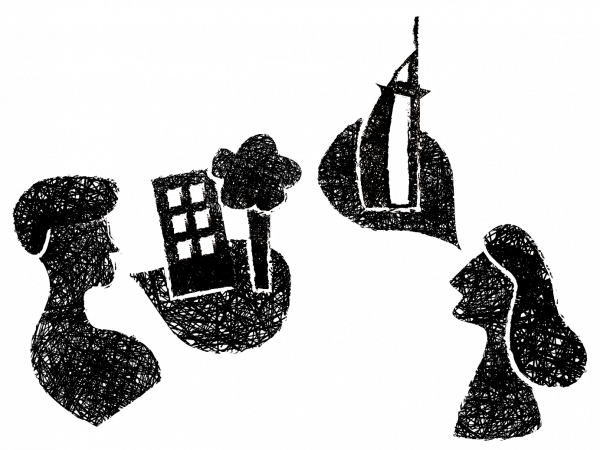- Home
- EN
- Our impact
- ProspeKtive
- The "smart & green" approach for more responsible buildings

The "smart & green" approach for more responsible buildings
September 2021
Expert
In a context of ecological and digital transition of buildings, adopting a "smart & green" approach makes it possible to deploy smart building projects by enriching them with a real sense of environmental responsibility. An approach that seeks the right balance between digital and ecology for the benefit, always, of the user.
Chronicle published in the Journal du Net on 07/09/2021.
This recent approach imposes some basic principles. First, the "smart and green" cannot be successful without teamwork. We are talking about close collaboration between the external consulting team and those concerned with real estate and IT in the company: real estate departments, those in charge of work environments, general services, maintenance and operations but also those responsible for IT, information systems and cyber-security. The challenge is also to get the client, the client, the investor or the occupant to work together to achieve a common goal.
The "smart and green" then imposes a real openness to innovation. Easier said than done ! Because it is good to make a bet on the future which involves a certain risk-taking on the part of investors, owners and occupants. For example, if the goal is to build a low-voltage building, you no longer have to have outlets. Consider connecting laptops with POE or another type of power supply, such as USB. These innovations naturally imply changes in habits and practices on the part of all employees. Support for change is therefore a crucial step in the success of the project. A "smart and green" approach is successful when the end user has changed their habits towards more virtuous environmental behavior.
Finally, the last major challenge is to facilitate mutual understanding between all areas of expertise. Working in "smart and green" indeed requires a very wide scope of skills, and very different fields of expertise: engineers, environmental experts, experts in building operations, thermal management, or analysis. equipment life cycles, but also information systems or consulting specialists. The challenge is therefore to get all of these experts to dialogue around the same objective.
Once these principles have been established, how can a "smart and green" approach be put in place in concrete terms?
Better target the real needs of users
The "smart and green" approach is based on three essential pillars: sobriety, sharing and the digital twin. In a "smart and green" approach, sobriety consists in reducing all of the building's consumption, for example the purchase of the equipment itself. As we know, the installation of digital equipment in a building generates a large volume of waste, what is called "e-waste". And yet, how can we do otherwise, since we all need phones, screens or computers in our workspaces?
This is the first challenge of the approach: targeting digital and energy sobriety by adjusting the number of equipment to the real needs of users. Each item of equipment must therefore correspond to an objective defined in advance. By looking for the most practical and suitable equipment, we limit the number of devices in service. The "smart and green" approach therefore has a double benefit: it makes it possible to reduce the budget invested in equipment and simultaneously reduce the energy bill in the global sense of the term. The search for energy sobriety also implies a global environmental approach: hence the need to call on experts of the "smart and green" approach: they have environmental data, such as thermal analyzes, consumption or data on the life cycle of equipment that allow workplace experts to draw user journeys from these consumption habits and data to optimize energy consumption.
Share infrastructure to optimize costs
The second pillar of the "smart and green" approach concerns pooling. The principle is simple: it is a question of using the same vectors when it comes to similar or identical types of transmission. In a building, certain infrastructures are necessarily dedicated infrastructures: for example, you cannot mix water and air pipes, just as you cannot combine water and electricity. On the other hand, some infrastructures can be shared. Like a motorway network on which circulate both private and professional vehicles, motorcycles, coaches, light vehicles and heavy goods vehicles, individual and collective vehicles. The objective is to reproduce this model at the scale of the building: rather than deploying the same type of network several times in a building, pooling the flow of information on the same cables and networks can considerably reduce the network infrastructure. . This work of convergence is part of a "green" approach since it makes it possible to optimize the operation of the building while reducing the environmental impact.
Putting technology at the service of people
The third and final element of the "smart and green" approach consists of the deployment of the digital twin. The concept is not new since it was born with Industry 4.0 more than ten years ago. On the other hand, its use in the building sector is more recent. The goal is to make the most of technology to get the most out of it, always for the benefit of users. The digital twin makes it possible to introduce transversal and predictive data management. As a data convergence platform, it has the capacity to host and return data from various sources (IoT, smartphone, comfort system, security system, etc.). But this transversal data management will not be successful without the processing and simulation capacity of the digital twin to deliver digital services to both managerial and end-users. The digital twin facilitates "just in time" and thus becomes the heart of companies' environmental efficiency policy.
Improving the well-being of users does not necessarily mean increasing the amount of equipment and data. But rather aim to reduce the environmental impact in a "green" principle now popular with users, who want to work in eco-responsible offices. By proposing to first target specific elements of sustainable development, which are then driven by the smart, the "smart and green" approach will undoubtedly revolutionize the way buildings are managed. Above all, it invites real estate players to adopt a pragmatic and virtuous vision that avoids the overconsumption of digital equipment and the associated costs ... for the well-being of all.
Release date: September 2021


